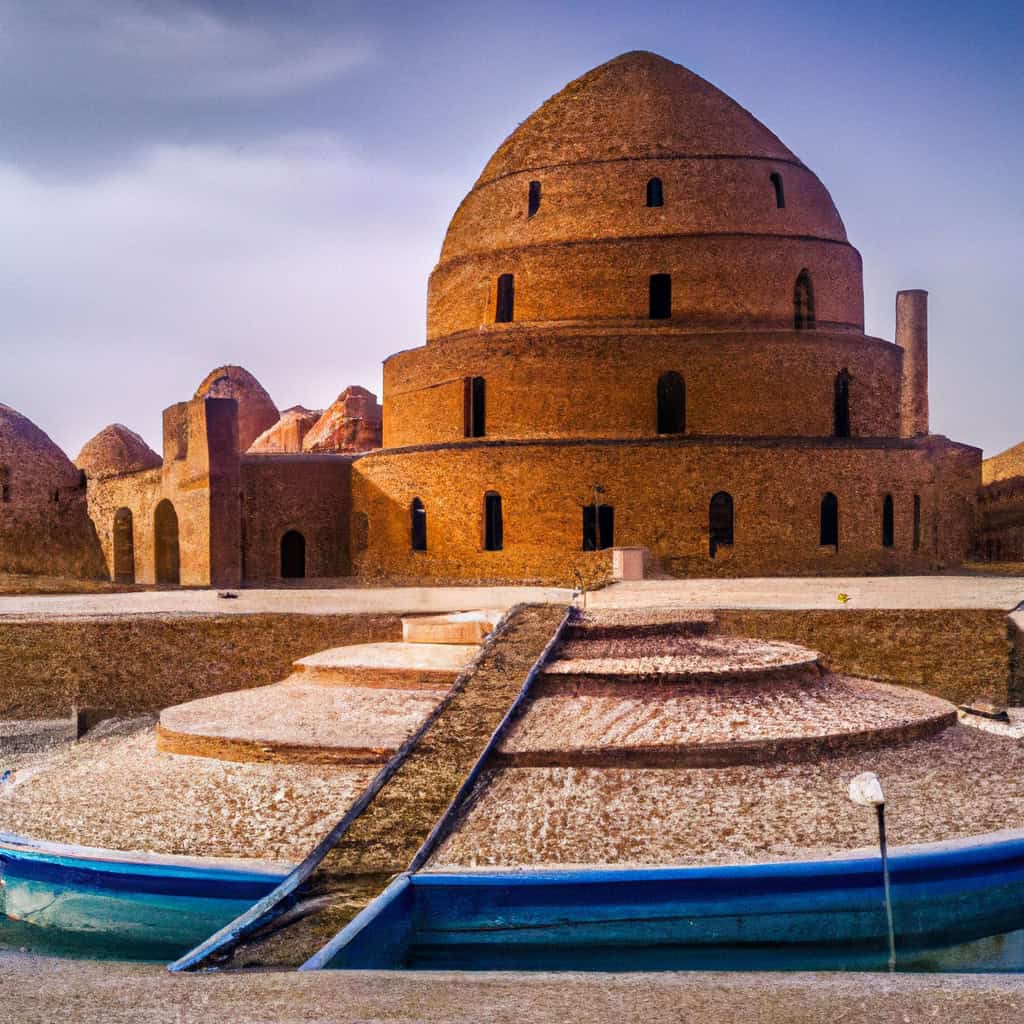Malik Cistern in Herat, is one of many fascinating sites that both foreign visitors and local tourists can explore while they visit Afghanistan and exploring Herat Province. But the Malik Cistern isn’t just any ‘site,’ it’s a part of Afghanistan’s rich heritage and stands as a testimony to the region’s vibrant past. Having withstood the test of time, Malik Cistern offers us a glimpse into the yesteryears of this mesmerizing land, making it a landmark of cultural and historical importance.
Malik Cistern Most Important Events
- The Construction Era: The most impactful historical moment of Malik Cistern is its construction period. Built during the Ghurid Empire in the 12th century, it showcases a mix of Islamic and native architecture, making it a uniquely iconic destination.
- The Great Storm: Another pivotal moment is the great storm of the 16th century, which despite causing extensive damage, saw the resilience of this historical masterpiece, bringing forth its fortitude and robustness.
- The Restoration Phase: The recent renovations in the late 20th century added to its legacy, as necessary restorations breathed fresh life into this magnificent structure
History of Malik Cistern in Herat
The history of Malik Cistern is a captivating tale of courage, resilience, and timeless beauty. Built during the reign of the Ghurid Empire in the 12th century, it was designed as a water reservoir to meet the water needs of the adjacent structure, which is now nothing but ruins. Malik Cistern was neatly tucked away in the sweeping landscapes of Herat, providing a scenic yet functional solution to the water scarcity in the region.
Entering the 16th century, Malik Cistern faced a formidable challenge when Herat witnessed a torrential storm. The intensity of the storm damaged many historical monuments, including Malik Cistern. However, the damage was not significant; the cistern showcased its remarkable resilience and continued to serve its purpose. It further entrenched its place in Herat’s history as an inspiring symbol of the power of endurance.
The late 20th century marked another significant phase in the history of Malik Cistern. It was at this time that the structure underwent extensive renovations. The renovations involved the meticulous restoration of the antique aesthetics while ensuring the continued functionality of this water resource.
Why It’s Important to Afghan History
Malik Cistern holds a significant place in Afghanistan’s history, as it marks the grandeur of the Ghurid Empire and the architectural genius of the 12th century. Despite the ravages of time and natural calamities, the cistern has endured, offering us a glimpse into a past marked by innovative solutions to practical problems.
Moreover, the cistern is a testimony to the resilience and endurance that is integral to Afghanistan’s national spirit. In every phase of its existence, the cistern has defied odds and times of uncertainty, standing as an iconic monument of the nation’s rich historical tapestry.
Why Visit Malik Cistern
A visit to Malik Cistern allows you to walk across the halls of history while admiring its architectural beauty and the scenic surroundings. As you navigate the cistern, you can imagine the communities it served centuries ago and marvel at the ingenuity of ancient architects. Additionally, the cistern’s serene surroundings provide a striking contrast to the hustle and bustle of urban life, offering a space for some quiet reflection.
- Admire the unique mix of Islamic and native architecture
- Experience the tranquility of the surrounding landscapes
- Uncover fascinating details about Afghan history and culture
- Step into the stories of resilience and revival etched into its structure.
- Participate in guided tours offered by experienced local guides
The Malik Cistern is situated in Herat Province, easily accessible by road transportation. The best time to visit is in the early morning or late afternoon for an unmatched view of the sunrise or sunset.
Cultural & Tourist Significance
The importance of Malik Cistern extends beyond its historical significance, offering a distinct cultural experience. It provides an understanding of ancestral Afghani lifestyle and offers insights into the socio-cultural life of the time.
Moreover, Malik Cistern is now a popular tourist spot, attracting visitors from across the globe. Visitors are drawn to its unique architecture, significant historical moments, and the serene surroundings.
Lastly, Malik Cistern has supported local economies, providing employment opportunities to community members. Whether it is as tour guides, preservation staff, or vendors setting up local shops, the cistern offers sustainable livelihood alternatives to the locals.
Interesting Facts
An intriguing aspect of Malik Cistern is the legends associated with it. Local lore says the cistern is a wish-granting monument — an exciting piece of folklore that adds to its mystique.
Malik Cistern is also known for its unique design — not only is it grand but also practical. Its unique ‘step’ architecture was designed to facilitate easy access to water, reflecting the ingenious problem-solving skills of the ancient architects.
Lastly, while restoration efforts were made to keep the structure as close to its original form as possible, fine details of modern architecture can be observed. These subtle details make Malik Cistern, a harmonious blend of ancient and modern architectural styles.
Visiting Malik Cistern is a journey through time — a journey that envelops you in the rich tapestry of Afghan history, culture, and resilience. It’s indubitably an inspiring heritage site that adds a timeless charm and sophistication to Afghan tourism.

